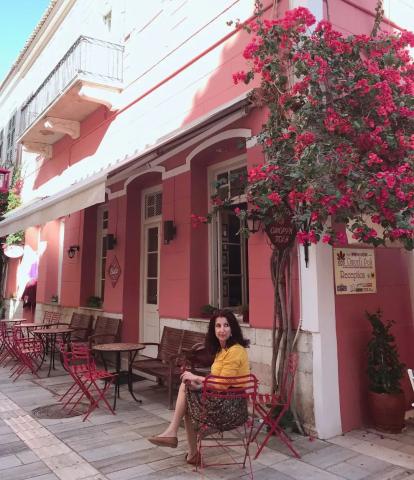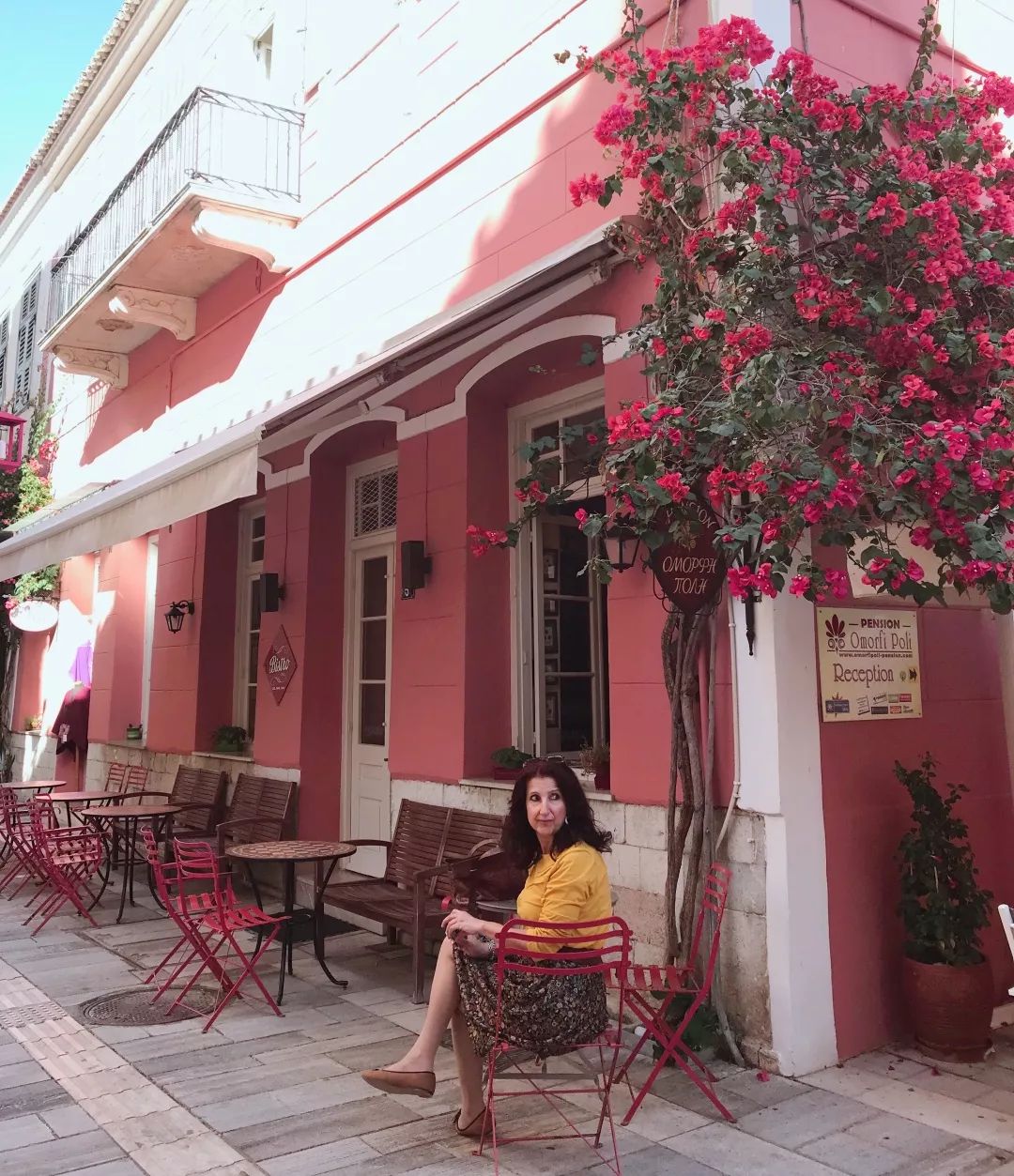

November 5 morning
From the port of Piraeus in Athens,
To Kiffisou A bus station,
Back to Nafplion
Taking a taxi from Piraeus Port in Athens to Bus Station A in the Kiffisou area, the driver offered a fare of 17 euros, I would say 15 euros. He readily agreed.
Later, I took a taxi twice in Nafplio and found that they have a metered price, which is a little over €1 per kilometer. However, they usually do not use meters, so they can give passengers a preferential price. Passengers can also pay according to the metered price. Let’s discuss the price based on the situation on site. For example, when we went from Mycenae to the Ancient Theater of Epidaurus, which was more than 40 kilometers, the driver said it was 50 euros, but he said he didn’t use the meter and gave us a discount of 40 euros. We laughed and bargained: "35 euros! 35 euros!" The driver also laughed: "Okay, okay."





From Athens to Nafplio, 2.5 hours, flat road, contiguous olive estates
From Athens Bus Station A to Nafplio, you will pass through the Corinth Canal, but you only get a glimpse of it. It took a total of two and a half hours' drive, and there were groves of olive trees along the way. Later, the taxi driver in Mycenae told us that the olive oil harvested in their area last year was sold to one of the "largest" food companies in China.
The “biggest” he mentioned was the COFCO Corporation.
With COSCO Shipping Group successfully acquiring a 67% stake in the Port of Piraeus, Greece's largest shipping port, it seems that China's cooperation with Greece has deepened. In addition, in recent years, there has been a lot of publicity about Greek real estate purchases and immigration in China, as well as the spread of many photos of Greek honeymoons and weddings. It is easy for us to have a feeling: Greece is full of Chinese people.
But, I don't know if that's an illusion. We both suspected it was.
Because it has been six days now, except for briefly meeting a Chinese tourist group at the Minoan Palace in Crete and at the seaside of Nafplio, we have hardly seen the faces of the Chinese compatriots, not even the faces of the Chinese compatriots. East Asian faces. I didn’t see any East Asian faces from individual travelers.
JF said that she spent 50 days in Rome and Florence last year, and she saw Chinese people everywhere. She could see a Chinese restaurant within five meters of her walk. She thought it would be like this in Greece, but the result was completely different.
This feeling intensified when we reached Nafplio in the Peloponnese. In Crete, at least the people there basically know English and speak it very well. There is a strong tourist and holiday atmosphere. But when you get here, the Greeks’ English level suddenly drops, and you may not even be able to speak or listen at all even if you ask a few questions.
The landlord of the apartment we rented probably only knew yes, OK, no, and byebye in English. But she was very confident. She showed us around the house and introduced us to various facilities and precautions in the room. She spoke Greek throughout the whole process. Regardless of whether we understood it or not, she thought we understood what she said.






Take a bus from the old town of Nafplion to Mycenae, which is 24 kilometers and takes 1.5 hours to walk, which is almost the time to watch a movie.
We took a bus to Mycenae. From the appearance to the seats, I thought it was a direct bus, but I didn’t expect it to be a bus. Walking along the country roads, there are not only many small stations at the entrance and end of the village, but you can also wave to stop to pick up and drop off passengers. When I passed a place that looked like a "big market", I stopped for a long time, and many old ladies and aunts came up one after another. The carriage was suddenly filled with the smell of green onions from the farmer's market, and there was a constant noise. The voices sounded like they were all acquaintances... My feeling at the time was just like a certain Greek movie I had watched, the kind of atmosphere where a big family was noisy and full of warmth.






Nafplio, the first capital city of Greece after its independence from the Ottoman Empire.
The ancient city of Nafplion has a rather exquisite tone. It is somewhat similar to the old towns of Heraklion and Chania in Crete. The houses are painted in various warm and bright colors, with shutters, bougainvillea, balconies, open-air cafes, restaurants, ports, and southern European style. , all bearing some traces of the Venetians. But Nafplio is quieter, and those restaurants are less active in soliciting customers, or in other words, more reserved. The waiter sat there and just smiled or said hello to the tourists who occasionally passed by.
There are many shops in the old town, and most of them are probably jewelry shops. There are some jewelry stores that are very exquisite, with designer models, or where craftsmen sit in the store to make and display the jewelry. The space and furnishings are very high-end and artistic. Most jewelry stores look like Yiwu style, but the display, although densely packed, tries their best to display the collection-maniac style of the Heraklion Museum. Later I went to the Mycenaean Museum, and the display was also a bit of a hoarder.
This is quite admirable about the Greeks. You think they are lazy, you think they are smart and cunning, you think they talk incessantly and doodle everywhere, but they are very careful, patient and attentive when it comes to making museums, and they are also very careful when making store displays. In this way, we do not advocate "less is more" but make "more is clear".

